Ok, here how it could be done
We will use Dirichlet Distribution, which is distribution for random numbers xi in the range [0...1] such that
Sumi xi = 1
So, after linear rescaling condition for sum would be satisfied automatically. Dirichlet distribution is parametrized by αi, but we assume all RN to be from the same marginal distribution, so there is only one parameter α for each and every index.
For reasonable large value of α, mean value of sampled random numbers would be =1/n, and variance ~1/(n * α), so larger α lead to random value more close to the mean.
Ok, now back to rescaling,
vi = A + B*xi
And we have to get A and B. As @HansKesting rightfully noted, with only two free parameters we could satisfy only two constraints, but you have three. So we would strictly satisfy low bound constraint, sum value constraint, but occasionally violate upper bound constraint. In such case we just throw whole sample away and do another one.
Again, we have a knob to turn, α getting larger means we are close to mean values and less likely to hit upper bound. With α = 1 I'm rarely getting any good sample, but with α = 10 I'm getting close to 40% of good samples. With α = 16 I'm getting close to 80% of good samples.
Dirichlet sampling is done via Gamma distribution, using code from MathDotNet.
Code, tested with .NET Core 2.1
using System;
using MathNet.Numerics.Distributions;
using MathNet.Numerics.Random;
class Program
{
static void SampleDirichlet(double alpha, double[] rn)
{
if (rn == null)
throw new ArgumentException("SampleDirichlet:: Results placeholder is null");
if (alpha <= 0.0)
throw new ArgumentException($"SampleDirichlet:: alpha {alpha} is non-positive");
int n = rn.Length;
if (n == 0)
throw new ArgumentException("SampleDirichlet:: Results placeholder is of zero size");
var gamma = new Gamma(alpha, 1.0);
double sum = 0.0;
for(int k = 0; k != n; ++k) {
double v = gamma.Sample();
sum += v;
rn[k] = v;
}
if (sum <= 0.0)
throw new ApplicationException($"SampleDirichlet:: sum {sum} is non-positive");
// normalize
sum = 1.0 / sum;
for(int k = 0; k != n; ++k) {
rn[k] *= sum;
}
}
static bool SampleBoundedDirichlet(double alpha, double sum, double lo, double hi, double[] rn)
{
if (rn == null)
throw new ArgumentException("SampleDirichlet:: Results placeholder is null");
if (alpha <= 0.0)
throw new ArgumentException($"SampleDirichlet:: alpha {alpha} is non-positive");
if (lo >= hi)
throw new ArgumentException($"SampleDirichlet:: low {lo} is larger than high {hi}");
int n = rn.Length;
if (n == 0)
throw new ArgumentException("SampleDirichlet:: Results placeholder is of zero size");
double mean = sum / (double)n;
if (mean < lo || mean > hi)
throw new ArgumentException($"SampleDirichlet:: mean value {mean} is not within [{lo}...{hi}] range");
SampleDirichlet(alpha, rn);
bool rc = true;
for(int k = 0; k != n; ++k) {
double v = lo + (mean - lo)*(double)n * rn[k];
if (v > hi)
rc = false;
rn[k] = v;
}
return rc;
}
static void Main(string[] args)
{
double[] rn = new double [30];
double lo = -50.0;
double hi = 50.0;
double alpha = 10.0;
double sum = 300.0;
for(int k = 0; k != 1_000; ++k) {
var q = SampleBoundedDirichlet(alpha, sum, lo, hi, rn);
Console.WriteLine($"Rng(BD), v = {q}");
double s = 0.0;
foreach(var r in rn) {
Console.WriteLine($"Rng(BD), r = {r}");
s += r;
}
Console.WriteLine($"Rng(BD), summa = {s}");
}
}
}
UPDATE
Usually, when people ask such question, there is an implicit assumption/requirement - all random numbers shall be distribution in the same way. It means that if I draw marginal probability density function (PDF) for item indexed 0 from the sampled array, I shall get the same distribution as I draw marginal probability density function for the last item in the array. People usually sample random arrays to pass it down to other routines to do some interesting stuff. If marginal PDF for item 0 is different from marginal PDF for last indexed item, then just reverting array will produce wildly different result with the code which uses such random values.
Here I plotted distributions of random numbers for item 0 and last item (#29) for original conditions([-50...50] sum=300), using my sampling routine. Look similar, isn't it?

Ok, here is a picture from your sampling routine, same original conditions([-50...50] sum=300), same number of samples

UPDATE II
User supposed to check return value of the sampling routine and accept and use sampled array if (and only if) return value is true. This is acceptance/rejection method. As an illustration, below is code used to histogram samples:
int[] hh = new int[100]; // histogram allocated
var s = 1.0; // step size
int k = 0; // good samples counter
for( ;; ) {
var q = SampleBoundedDirichlet(alpha, sum, lo, hi, rn);
if (q) // good sample, accept it
{
var v = rn[0]; // any index, 0 or 29 or ....
var i = (int)((v - lo) / s);
i = System.Math.Max(i, 0);
i = System.Math.Min(i, hh.Length-1);
hh[i] += 1;
++k;
if (k == 100000) // required number of good samples reached
break;
}
}
for(k = 0; k != hh.Length; ++k)
{
var x = lo + (double)k * s + 0.5*s;
var v = hh[k];
Console.WriteLine($"{x} {v}");
}

